
This is a guest post written by Alisa, human companion to a rescue Shiba Inu named Kuma. Copyright © Alisa and Kuma.
Disclaimer: Pet nutrition is a complicated topic with many grey zones and contradicting information from experts. Even pet nutrition organizations such as the NRC (National Research Council), AAFCO (Association of American Feed Control), and FEDIAF (European Pet Food Industry Federation) all have different guidelines, which disagree on what constitutes a complete and balanced diet. There is no consensus on what guideline is best or “right” for each individual pet. Therefore, the statement “complete and balanced” should be taken with a grain of salt.
BARF, Raw Feeding, Raw Diet
B.A.R.F. stands for Biologically Accurate Raw Food. This is a model of raw feeding that mimics what dog ancestors (wolves) eat in the wild. Wolves are primarily carnivores that eat whole prey, but have been observed to eat plant matter such as grasses and berries in small quantities. The BARF model for adult dogs consists of 70% raw meat, 10% raw meaty bone, 5% liver, 5% second secreting organ, and 10% plant matter. NOTE: this is a general guideline, and it is totally okay to deviate from it based on an individual dog’s needs.

There are many reasons for and against raw feeding. The main argument for commercial pet food (dry and wet dog food), is that manufacturers need to adhere to nutritional and safety guidelines in their region in order to bring their products to market. Therefore, it is better to feed nutritionally balanced commercial pet food instead of unbalanced raw food. Commercial pet food is convenient and cost-effective. There are many brands on the market to choose from, and some have scientific research and backing.
In contrast, the raw pet food market is less regulated. The main driver for a raw diet is the focus on feeding whole foods that offer better nutritional value (bioavailability) compared to the byproducts and supplements commonly used in commercial pet food manufacturing. In addition, some dogs have food allergies or intolerances, and it can be difficult to determine exactly which ingredient is the culprit when a pet food contains so many ingredients. Raw feeding means having full control of all the ingredients so that we may easily eliminate or replace as needed. The tradeoff is the time, money, and effort needed to ensure that the raw food is nutritionally balanced. Raw food is also difficult to travel with, and therefore not suitable for all lifestyles. Note that veterinary associations and public health agencies discourage raw diets due to the risk of pathogens in raw meat that may cause illness in dogs, cats, and humans. Here are links to the stance of several North American agencies:
- AVMA (American Veterinary Medical Association)
- AAHA (American Animal Hospital Association)
- CVMA (Canadian Veterinary Medical Association)
- PHAC (Public Health Agency of Canada)
- CDC (Centre for Disease Control and Prevention)
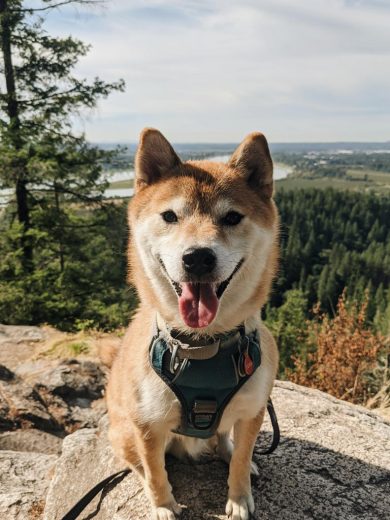
Why I Feed My Shiba Inu a Raw Diet
- It is accessible to me and I am willing to put in the extra time to research, source, and prepare raw food.
- I dislike the use of synthetic supplements and preservatives in commercial pet food. There have been recalls of commercial pet food due to excessive levels of supplements causing toxicity in dogs, leading to kidney failure and death.
- Shiba Inus are a basal dog breed and more genetically related to wolves compared to many modern domesticated dogs. I personally believe feeding Shibas a raw diet makes sense.
- Food allergies usually manifest after prolonged exposure to one brand, type, or form of food. Doing a rotation of various proteins reduces the chance of developing food allergies. Feeding whole foods makes it easy to identify and remove/replace individual ingredients causing allergies
- A raw diet is low in carbohydrates, which is excellent for weight control. While dogs can digest carbohydrates, it is not a biological requirement according to the nutritional guidelines. A low carbohydrate diet is also great for dogs with diabetes, as it will reduce the amount of insulin required for the body to process the glucose. I would know this, because I am a diabetic-in-remission myself, all thanks to a low carbohydrate diet.
- Animal-based whole foods have high bioavailability. There are also no filler ingredients so stools are smaller and less smelly.
- Raw meaty bones help keep teeth clean. The act of pulling bits of meat, gristle, and cartilage off the bone is similar to what brushing and flossing do for human teeth.
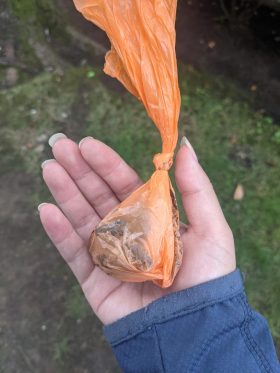
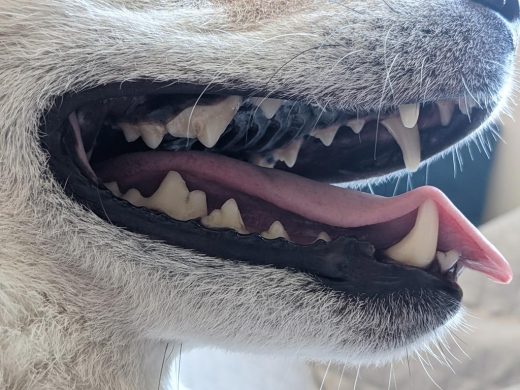
How to Calculate Raw Food for Adult Dogs
The amount of food a dog needs will depend on age, activity level, and whether they need to gain or lose weight. The average adult dog should be fed 2-3% of their body weight each day. A dog that is very active or works all day can be fed 3-4% of their weight, while an overweight and sedentary dog may only need to be fed 1.5-2%. It is totally okay to deviate slightly from day to day, and adjust based on the individual dog’s needs. If the dog is gaining or losing weight, the amount they eat will also need to be recalculated and adjusted frequently.
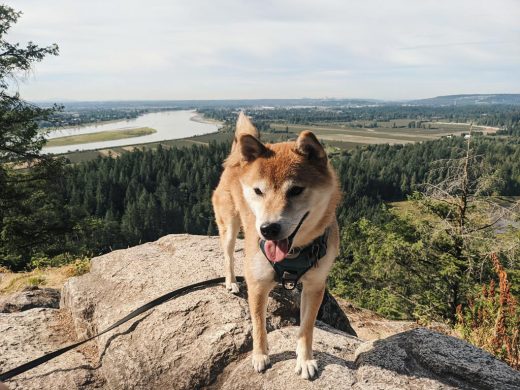
Kuma is a neutered young adult dog weighing 12kg. His vet says he is at a healthy weight, and we should maintain it. He is moderately active, so we feed 2.5% of his weight daily to maintain.
12000g x 0.025 = 300g total weight of food to feed each day
300 x 0.70 = 210g meat
300 x 0.10 = 30g bone
300 x 0.05 = 15g liver
300 x 0.05 = 15g second secreting organ
300 x 0.10 = 30g plant matter

I also weigh and record each portion of food in a notebook when feeding Kuma. This is an optional step, but I do it as a precaution in case Kuma ever gets sick and the vet asks what/when he was fed.
A whole day of food for Kuma looks something like this:
- Ground turkey (137g meat)
- Lamb neck slice (32g meat 16g bone)*
- Chicken neck (11g meat 21g bone)*
- Smelt (16g meat)
- Mussels (8g meat)
- Chicken heart (8g meat)
- Green tripe (4g meat)
- Beef liver (14g)
- Beef kidney (15g)
- Plant matter: kelp + veggie purée, raspberries, carrots, pumpkin, hemp seeds
- Others: unsweetened Greek yogurt
Total: 216g meat, 37g bone, 14g liver, 15g second secreting organ.
*I calculated the meat/bone ratio of raw meaty bones using this tool.
I do not weigh the individual plant matter because they are usually mixed in with wet components such as yogurt.

FAQs About Raw Diet
Q: Can raw food make my dog sick?
A sudden change in diet can make a dog sick, or the dog may be allergic to new ingredient(s). As with any food transitions, it is best to gradually do it over a period of 1-2 weeks. New ingredients should be introduced one at a time and observed for allergies and intolerances. Furthermore, any food (even human food) can be contaminated with bacteria if the processing facility is contaminated.Therefore, we should practice good hygiene by washing hands and disinfecting surfaces, regardless of what we are handling.
Based on what I have read, it is rare for healthy adult dogs to get sick from Salmonella or E. coli due to their strong immune systems. However, according to the CDC, even animals that appear healthy and clean can be carriers of both Salmonella or E. coli. Therefore, it appears that the primary risk is to the human family around our dogs. Nevertheless, this survey shows that transmission from pet to human is present but rare.
Q: Aren’t bones dangerous?
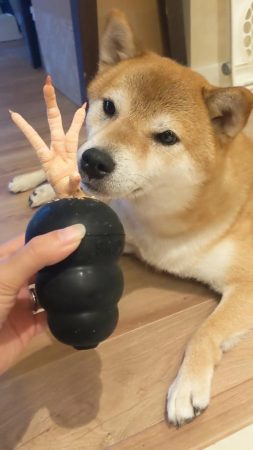
Some bones are dangerous. Cooked bones can splinter and cause damage to the GI tract. Machine-cut bones may have sharp edges that can cause lacerations to the dog’s mouth, so always inspect a chew before giving it to the dog. Weight-bearing bones and hard chews (antlers, hooves, marrow bones, etc.) may cause tooth fractures. Because of these reasons, it is best to stick to appropriately sized raw consumable bones, especially if the dog is a big chewer. Bones from small animals such as chicken, duck, turkey and rabbits are safest to consume and generally easy to access. What is safe or dangerous also depends on the individual dog, for example whether they are chewers or like to swallow food in large chunks. As with most things, a healthy dose of caution and common sense will be useful here.
Q: How expensive is raw feeding?
The price varies by quite a lot. It can be extremely expensive if you are buying human-grade cuts in small quantities from the grocery store. Much like commercial pet food, there are different price points depending on the quality of the ingredients going into the final product.
Q: Will raw food cause nutritional deficiencies?
Raw diets generally do not require extensive supplementation or multivitamins to provide all essential nutrients. Appropriately selected whole foods can create a nutritionally complete diet for a dog without resorting to synthetic supplementation. I will address tips on balancing raw food in a separate article. Deficiencies also don’t become apparent overnight. Regardless of what type of food your furry friend eats, always keep an eye out for changes in their stool, energy level, behaviour, as well as coat and skin condition. It is important to take our dog to annual vet check ups where a professional can perform a proper physical and dental examination. When in doubt, we can also request bloodwork to spot any abnormalities. NOTE: dogs fed on raw diet will have higher BUN (blood urea nitrogen) readings due to the consumption of more protein.
Part 2 of this series describes how I source, nutritionally balance, prepare, and store raw dog food for my Shiba Inu.
Visit with Shiba Inu Kuma
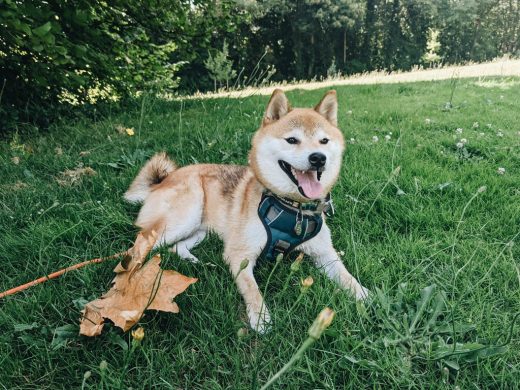
How did you transition from kibble food to raw diet?
Feeding yogurt, liver, cottage cheese, boneless meat for half of daily food intake. The other half is kibble feeding. Don’t mix kibble and raw food together. Either feed kibble in the morning meal, then raw food in the evening; or vice versa. Once the fecal is consistently healthy, then add bone on like chicken wing, chicken rib bones, chicken neck. Again once the faces is consistently healthy, then add food amount of raw food and wean off kibble.
Don’t feed egg when your dog is still on kibble. When dog is completely on raw food, then it’s fine to add raw egg in.
Do you prepare the food each day or can if be prepared in batches and then frozen for a week?
Hi Ashley,
I meal prep every 2 weeks and freeze in a deep freezer. Then I thaw a container out everynight by moving it to the fridge
Hi, My shiba needs the same amount. Do you feel him once a day or divide everything between 2 meals? Thank you for sharing
Two meals per day. If I do a training session mid day I subtract the amount out of his dinner. (from Kuma’s mom)
Wow
You seams so dedicated to your animal. I can see how much you love him by reading what you feed him
Good job maman!
Thanks for sharing. Will start my pup on raw food now ♡